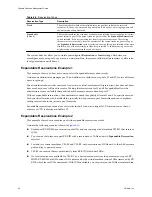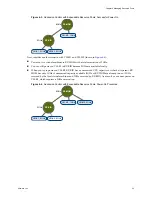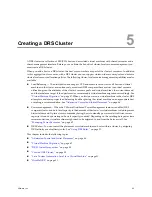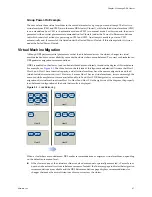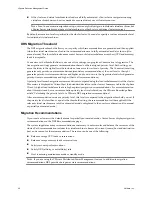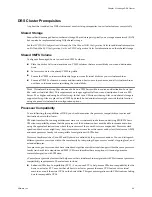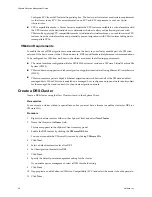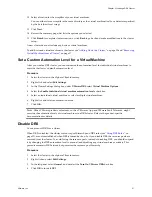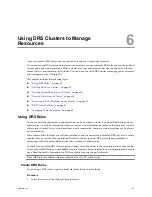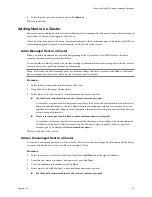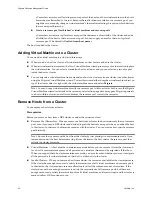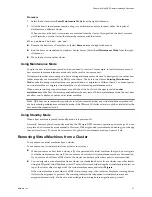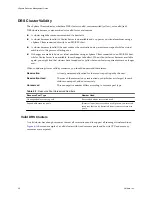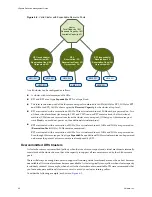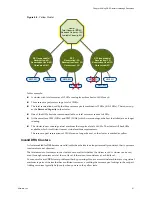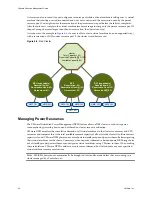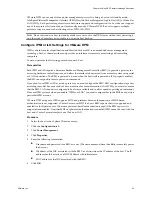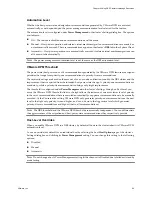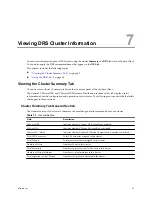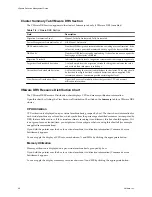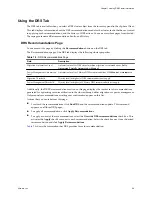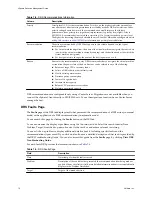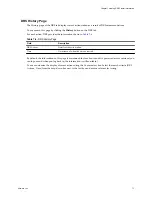
vCenter Server removes all existing resource pools of the host and the virtual machines in the host’s
hierarchy are all attached to the root. Because share allocations are relative to a resource pool, you
might have to manually change a virtual machine’s shares after selecting this option, which destroys
the resource pool hierarchy.
n
Create a resource pool for this host’s virtual machines and resource pools
vCenter Server creates a top-level resource pool that becomes a direct child of the cluster and adds
all children of the host to that new resource pool. You can supply a name for that new top-level
resource pool. The default is Grafted from <host_name>.
The host is added to the cluster.
Adding Virtual Machines to a Cluster
You can add a virtual machine to a cluster in three ways.
n
When you add a host to a cluster, all virtual machines on that host are added to the cluster.
n
When a virtual machine is created, the New Virtual Machine wizard prompts you for the location to place
the virtual machine. You can select a standalone host or a cluster and you can select any resource pool
inside the host or cluster.
n
You can migrate a virtual machine from a standalone host to a cluster or from a cluster to another cluster
using the Migrate Virtual Machine wizard. To start this wizard either drag the virtual machine object on
top of the cluster object or right-click the virtual machine name and select Migrate.
N
OTE
You can drag a virtual machine directly to a resource pool within a cluster. In this case, the Migrate
Virtual Machine wizard is started but the resource pool selection page does not appear. Migrating directly
to a host within a cluster is not allowed because the resource pool controls the resources.
Remove Hosts from a Cluster
You can remove hosts from a cluster.
Prerequisites
Before you remove a host from a DRS cluster, consider the issues involved.
n
Resource Pool Hierarchies – When you remove a host from a cluster, the host retains only the root resource
pool, even if you used a DRS cluster and decided to graft the host resource pool when you added the host
to the cluster. In that case, the hierarchy remains with the cluster. You can create a host-specific resource
pool hierarchy.
N
OTE
Ensure that you remove the host from the cluster by first placing it in maintenance mode. If you
instead disconnect the host before removing it from the cluster, the host retains the resource pool that
reflects the cluster hierarchy.
n
Virtual Machines – A host must be in maintenance mode before you can remove it from the cluster and
for a host to enter maintenance mode all powered-on virtual machines must be migrated off that host.
When you request that a host enter maintenance mode, you are also asked whether you want to migrate
all the powered-off virtual machines on that host to other hosts in the cluster.
n
Invalid Clusters – When you remove a host from a cluster, the resources available for the cluster decrease.
If the cluster has enough resources to satisfy the reservations of all virtual machines and resource pools
in the cluster, the cluster adjusts resource allocation to reflect the reduced amount of resources. If the
cluster does not have enough resources to satisfy the reservations of all resource pools, but there are
enough resources to satisfy the reservations for all virtual machines, an alarm is issued and the cluster is
marked yellow. DRS continues to run.
vSphere Resource Management Guide
56
VMware, Inc.
Summary of Contents for ESX 4.0
Page 6: ...vSphere Resource Management Guide 6 VMware Inc...
Page 44: ...vSphere Resource Management Guide 44 VMware Inc...
Page 52: ...vSphere Resource Management Guide 52 VMware Inc...
Page 72: ...vSphere Resource Management Guide 72 VMware Inc...
Page 80: ...vSphere Resource Management Guide 80 VMware Inc...

